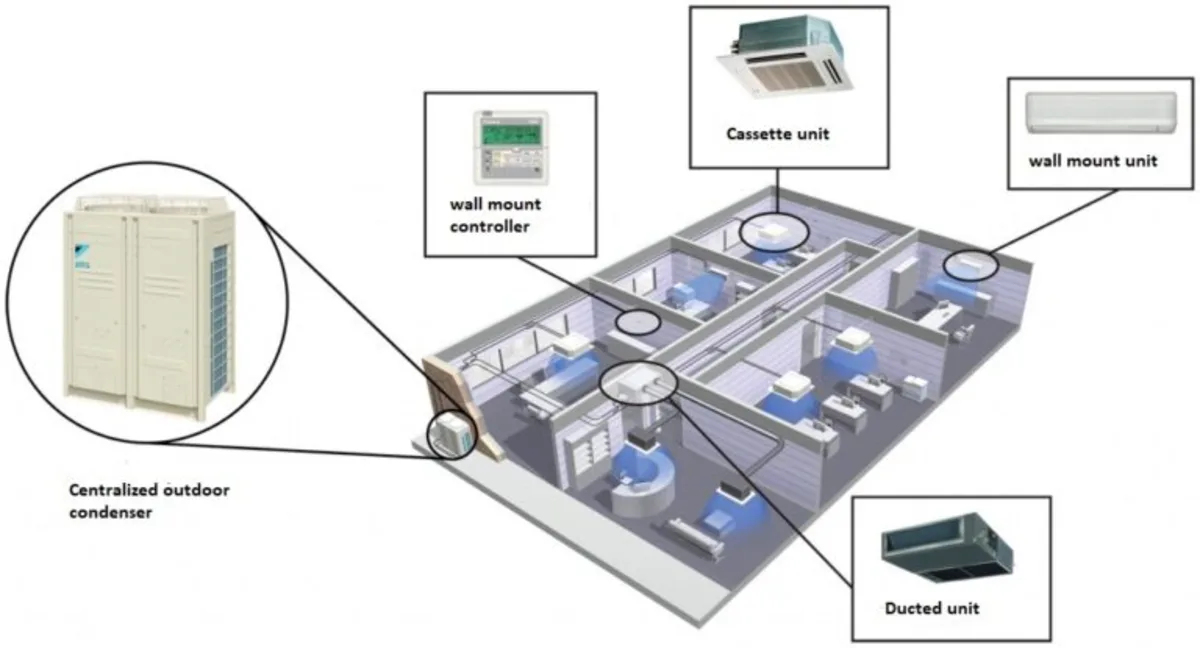Choosing the right air conditioning system for an office building isn’t just about comfort—it’s about performance, energy efficiency, and long-term cost control. With rising expectations for indoor air quality and sustainability, facility managers are prioritizing systems that offer precise climate control, energy savings, and smart integration. So, which type of air conditioner is most commonly used in office buildings today?
1. Central Air Conditioning Systems: The Standard Choice
Central air conditioners remain the most common solution in medium to large office buildings. These systems use a central unit that cools air and distributes it through ductwork to various zones within the building. The setup typically includes air handling units (AHUs), chillers, and sometimes rooftop units (RTUs).
Why they’re preferred:
Efficient for large spaces: Central systems can cool large floor areas effectively.
Consistent temperature control: Ideal for open-plan offices and environments with similar usage patterns across zones.
Low visual impact: Most components are hidden, with only vents visible inside office spaces.
Considerations: Installation can be costly and complex, especially in older buildings without existing ductwork. Maintenance of ducts and filters is also crucial to ensure air quality.
2. Variable Refrigerant Flow (VRF) Systems: Precision and Flexibility
Variable Refrigerant Flow (VRF) systems are gaining traction, especially in modern, energy-conscious office buildings. These systems utilize refrigerant to provide both cooling and heating, and enable several indoor units to be linked to one outdoor unit.
Advantages:
Zoned control: Different areas of the office can be set to different temperatures, which is ideal for buildings with varied usage patterns.
Energy efficiency: VRF systems adjust the amount of refrigerant based on real-time demand, reducing waste.
Space-saving design: No bulky ductwork, making them perfect for retrofit projects or buildings with architectural limitations.
Considerations: Higher upfront costs and more complex system design, but the energy savings and flexibility often justify the investment over time.
3. Packaged Air Conditioning Units: Simplicity in a Box
For smaller office buildings or standalone structures, packaged air conditioners provide an all-in-one solution. These units house both the evaporator and condenser in a single cabinet, typically installed on rooftops or ground-level platforms.
Key benefits:
Ease of installation: Compact and self-contained, making them quicker to install.
Cost-effective: Lower initial cost and maintenance compared to more complex systems.
Ideal for small offices: Great for buildings under 5,000 square feet.
Considerations: Limited cooling capacity and less efficient for larger, multi-zone environments.
4. Ductless Mini-Split Systems: Niche but Growing
Ductless mini-split systems are similar to VRF setups but on a smaller scale. They are often used in small offices, server rooms, or areas where installing ductwork isn’t feasible.
Why they’re used:
Individual zone control: Each unit operates independently, which helps save energy in underused areas.
Simple installation: Minimal disruption, especially useful in renovations or temporary office setups.
Considerations: Not ideal for larger buildings due to limited capacity and more visible indoor units.
5. Smart Integration and Energy Management
Today’s air conditioners for office buildings often integrate with Building Management Systems (BMS). Whether it’s a VRF system or a centralized chiller plant, smart controls allow for real-time monitoring, predictive maintenance, and optimization of energy use.
Benefits of smart systems:
Lower operational costs through energy use tracking.
Enhanced comfort with automated adjustments based on occupancy and weather data.
Sustainability: Supports green building certifications like LEED and WELL.
Choosing the Right System
When selecting the best air conditioner for your office building, consider:
- Building size and layout
- Energy efficiency goals
- Budget for installation and maintenance
- Zoning and control needs
- Potential for integration with BMS
No single solution fits every office. However, central systems are still the go-to for many commercial spaces, while VRF systems offer the flexibility and efficiency demanded by modern buildings.
Final Thoughts
Service ac jakarta barat – Selecting the right air conditioning system is a strategic decision that affects everything from employee comfort to energy bills. Understanding the common options—central air, VRF, packaged units, and mini-splits—can help office managers and building owners make informed, future-proof choices.

